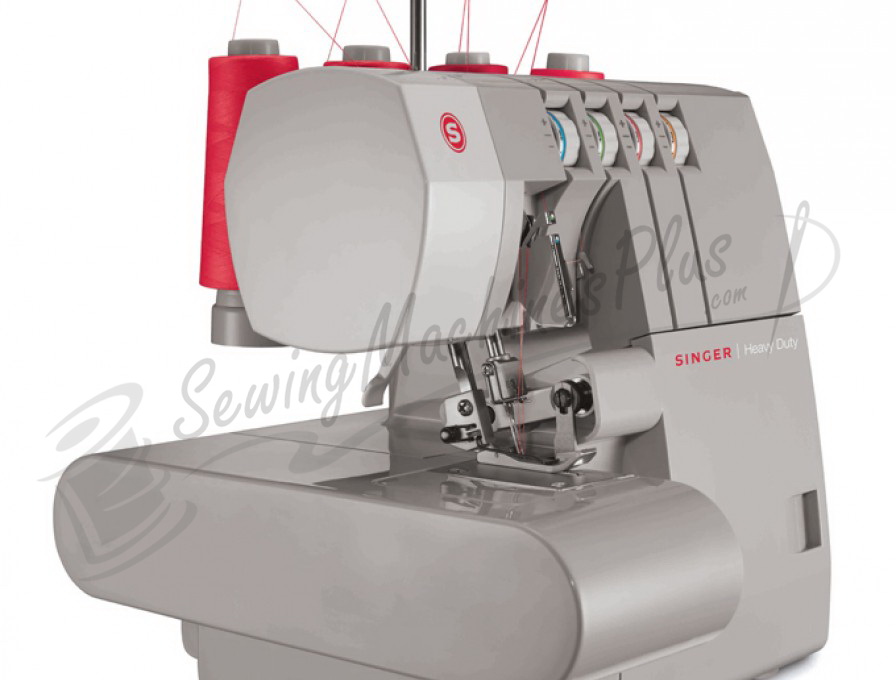

This, as you might imagine, produces quite a bit of waste. Serger blades trim your fabric edges as you sew. Still, there are some essentials to look for. Serger accessories packages tend to be on the more modest end of the scale. The accessories packs that come with regular sewing machines can range from minimal to extravagant.

This may or may not make a difference to your sewing, but it’s a good thing to be aware of. Some have a broader range, which means a greater ability to fine-tune the amount of stretch or compression of your fabric during sewing.

Most sergers have a differential feed range of between 0.5 and 2.0. This can come in handy when working with stretch fabrics and knits, or for special effects like ruffles and gathers. The differential feed mechanism allows you to adjust the speed of your serger’s feed dog sets relative to one another. Your regular sewing machine has one set of feed dogs to move the fabric through the machine. Not sure what’s what? Check out our post on the most common serger stitches to bring yourself up to speed. Not every serger will have all of the possible stitch types.īefore you press “buy,” think about the types of stitches you might use. You might find, for example, flatlock stitches, safety stitches (and mock safety stitches), a chain stitch and a rolled hem. These are the stitches for which many of us buy a serger in the first place. And not every machine will have all of the same built-ins.Īlmost all sergers will come with three-thread and four-thread overlock built in. But others are base functions built into the machine. Some stitches are a combination of two built-in stitches. Just like a regular sewing machine, sergers are capable of making different types of stitches. Likewise, for heavy fabrics and super-strong stress-bearing seams, you might want five or more threads. However, if you’re going to be sewing delicate fabrics, and especially if you’re planning to do some decorative edging, then you’ll need two-thread capability. To make the strong, stretchy, covered seams that sergers are famous for, three and four threads will suffice.

That depends on how you’re planning to use it. How many threads do you need on your serger? These are very worthwhile conveniences, in my opinion, and well worth seeking out. You might also have a dial that lifts the cutting blade out of the way. Other machines, however, have a dial or lever that moves the stitch finger for you. Some overlockers require you to remove, switch out, or change the position of your stitch finger. Two factors contribute to stitch width on a serger: stitch finger placement and the position of your upper cutting blade. but stitch width adjustments are a bit different. Most sergers have a dial to adjust stitch length. Mechanical sewing machines have knobs and dials. For a computerized machine, you push a button or use your touch screen. Stitch AdjustmentsĪdjusting stitch length and width on a regular sewing machine is pretty straightforward. Remember?Īs nifty as an air-threader is, with practice - and a good pair of tweezers - there’s no reason you can’t master threading a serger, as well. But so was threading your first sewing machine. Threading your serger can be a pain in the neck the first few times. And it has fewer built-in stitches than many similar models at this price point.īut, if consumer reviews are anything to go by, the Singer Finishing Touch 14SH654 has a huge fan base. This means that although it can make the strong, stretchy, finished seams that we all expect from a serger, you won’t be using it for delicate two-thread stitching.Īlso, it only has four built-in stitches, which is a step down from its predecessor. This model does, of course, have its limitations.
Singer serger quantumlock 4 free#
It comes with a free arm, which not every serger does, and the stitching speed, 1300 stitches per minute, is on par with that of other quality home sergers. This model does have a differential feed mechanism, for example, like most modern sergers, and unlike the Quantumlock 4.Īlso, like Singer’s 44-series of sewing machines, the Singer Finishing Touch 14SH654 has a heavy-duty metal frame. Is it the best new tool for your sewing room? Let’s find out in this Singer Serger 14SH654 review, shall we? About the Singer Finishing Touch 14SH654 Sergers are more expensive, generally speaking, than sewing machines at a similar level, but there are several budget models that consistently rate highly with consumers.


 0 kommentar(er)
0 kommentar(er)
